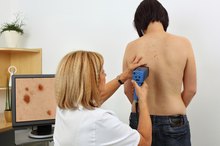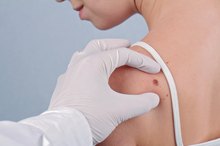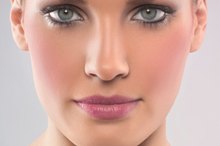What does fact checked mean?
At Healthfully, we strive to deliver objective content that is accurate and up-to-date. Our team periodically reviews articles in order to ensure content quality. The sources cited below consist of evidence from peer-reviewed journals, prominent medical organizations, academic associations, and government data.
The information contained on this site is for informational purposes only, and should not be used as a substitute for the advice of a professional health care provider. Please check with the appropriate physician regarding health questions and concerns. Although we strive to deliver accurate and up-to-date information, no guarantee to that effect is made.
How to Remove Seborrheic Keratosis
The non-cancerous skin growth sebhorreic keratosis typically does not require treatment. Sometimes, however, the keratoses may bleed, become inflamed or get irritated by clothing and jewelry. You might also want to remove them for purely cosmetic reasons. Unfortunately, no known way to prevent them exists, but you do have several treatment options. Use caution with any home remedies and consult a dermatologist to discuss all treatment options. Unless the growths cause complications like infection, insurance typically does not cover treatments to remove them.
Apply a topical cream that can exfoliate the skin and help break down the growth. Dermatologist Audrey Kunin, who runs the website Dermadoctor.com, suggests creams that include glycolic or lactic acid, which are alpha hydroxy acids with strong exfoliating properties. While many over-the-counter products contain these ingredients, you will probably get optimal results from a prescription-strength product.
Earlobe Wart
Learn More
Take vitamin D supplements. According to DermaDoctor.com, research conducted at the Yamaguchi School of Medicine in Japan found that supplementing with vitamin D3 might help sebhorreic keratoses. About two weeks into the treatment, smaller lesions began to crust and fall off. Talk to your doctor before supplementing with vitamin D, as it is a fat-soluble vitamin; excess supplementation with fat-soluble vitamins in particular can lead to excess levels in the body.
Consult a dermatologist about procedures used to remove the growths. The American Academy of Dermatology and Mayoclinic.com suggest cryrosurgery, electrocautery or cutterage. Cryrosurgery involves using liquid nitrogen to freeze the growh; it will eventually fall off. Possible side effects include a permanent white spot where the keratosis was once located. Electrocautery involves burning the growth with an electric current, while cutterage is the scraping of the lesion from the skin. Sometimes a doctor will use both of these treatments at once. Kunin also suggests chemical peels and laser therapy might produce good results as well.
Related Articles
Writer Bio
Based in New Jersey, Ryan Biddulph has been writing since 2010, with his articles appearing on LIVESTRONG.COM, among others. He has helped clients reach their personal fitness goals since 2001. He also runs an Internet marketing blog. He holds a Bachelor of Science in meteorology from Kean University and a certificate in Web development from the Cittone Institute.









